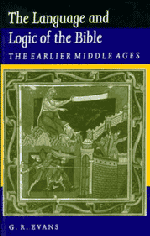Book contents
- Frontmatter
- Contents
- Preface
- Acknowledgements
- List of abbreviations
- List of ancient and mediaeval sources
- Biographical notes
- Introduction
- Part I The background
- Part II Lectio: surface and depths
- 4 Words and things and numbers
- 5 The historical sense and history
- 6 Exegesis and the theory of signification
- 7 Transference of meaning
- Part III Disputatio
- Conclusion
- Notes
- Select bibliography
- Index
5 - The historical sense and history
Published online by Cambridge University Press: 01 June 2011
- Frontmatter
- Contents
- Preface
- Acknowledgements
- List of abbreviations
- List of ancient and mediaeval sources
- Biographical notes
- Introduction
- Part I The background
- Part II Lectio: surface and depths
- 4 Words and things and numbers
- 5 The historical sense and history
- 6 Exegesis and the theory of signification
- 7 Transference of meaning
- Part III Disputatio
- Conclusion
- Notes
- Select bibliography
- Index
Summary
In Carolingian times Alcuin had prefaced his Quaestiones in Genesim with the explanation that he had chosen to omit the more difficult questions and had concentrated for the most part on those to which brief answers could be given: the historical ones. This view of the literal or historical sense as the simple sense might seem to make it of comparatively little account, merely a stepping-stone to those higher senses which were so much more rewarding; but Hugh of St Victor gives it a more important place.
Always an advocate of the laying of sound foundations, he insists that his pupils put the historical or literal sense first. He draws for them an elaborate picture of the ‘house’ of exposition. The foundation is laid in the earth. Its stones are not carefully cut or polished, but chosen for their solidity. Upon the foundation is raised the superstructure, where all is made level.
In the same way there are many words and phrases in the Bible, if we take it literally, which fit together like rough stones, leaving cracks and unevennesses. But the spiritual interpretation contains no contradictions. It rests upon the literal sense in such a way that it is like a series of stones cut to fit into the foundation stones below and to form a level surface above. It follows that without its foundation the spiritual sense itself would not be ‘level’, that is, without anomalies and contradictions.
- Type
- Chapter
- Information
- The Language and Logic of the BibleThe Earlier Middle Ages, pp. 67 - 71Publisher: Cambridge University PressPrint publication year: 1984



